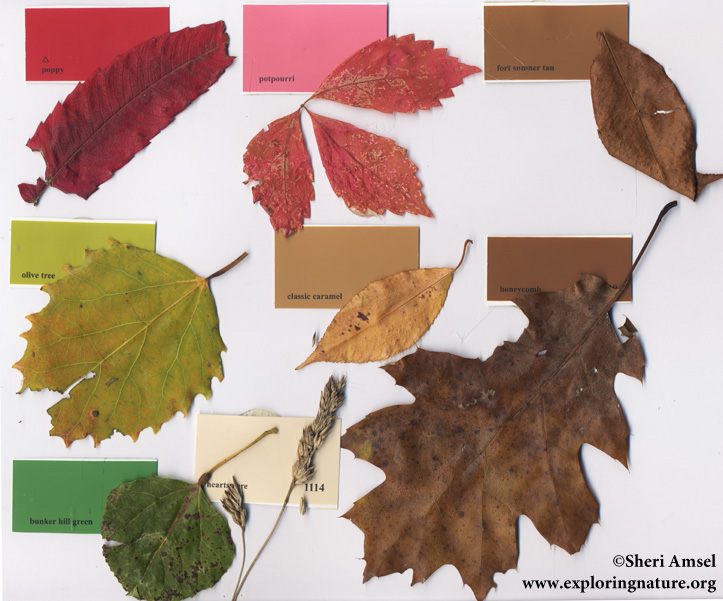

As they age, kids begin to discern more subtle colors and shapes around them. This exercise will help students learn to look beyond simple colors and take note of the variations of colors, shapes and patterns in the world around them.
Materials:
• enough copies of the Nature’s Color Wheel worksheet for each student
• paper bag to collect colored things
• glue
Activity:
1. Students will bring their Nature’s Color Wheel worksheet out with them into the school yard and find items in nature that match the colors on the sheet (leaves, rocks, bark, seeds, sand, etc.) (If they are young students, watch them to avoid collecting poison ivy or other toxic plants).
2. Once back in the classroom, they should glue a small sample of the things they found next to the corresponding color on their sheet. (You can allow them to share and trade things with other student if this works with your group of students.)
3) Lay out the sheets on a table and have your class look at all of them. Ask them to comment on how well the samples match the colors. Ask them to point out samples that match their colors particularly well or others that don’t match closely enough. Ask them to talk about how the colors outside are affected by the time of year. Ask them if this has affected the way they think about different colors. Ask them if they would like rename their color samples (e.g. change dark brown to bark brown, etc.)
When you research information you must cite the reference. Citing for websites is different from citing from books, magazines and periodicals. The style of citing shown here is from the MLA Style Citations (Modern Language Association).
When citing a WEBSITE the general format is as follows.
Author Last Name, First Name(s). "Title: Subtitle of Part of Web Page, if appropriate." Title: Subtitle: Section of Page if appropriate. Sponsoring/Publishing Agency, If Given. Additional significant descriptive information. Date of Electronic Publication or other Date, such as Last Updated. Day Month Year of access < URL >.
Amsel, Sheri. "Nature’s Color Wheel Investigation - Recognizing Color Variations (Older Primary Students)" Exploring Nature Educational Resource ©2005-2024. December 13, 2024
< http://www.exploringnature.org/db/view/Natures-Color-Wheel-Investigation-Recognizing-Color-Variations >
